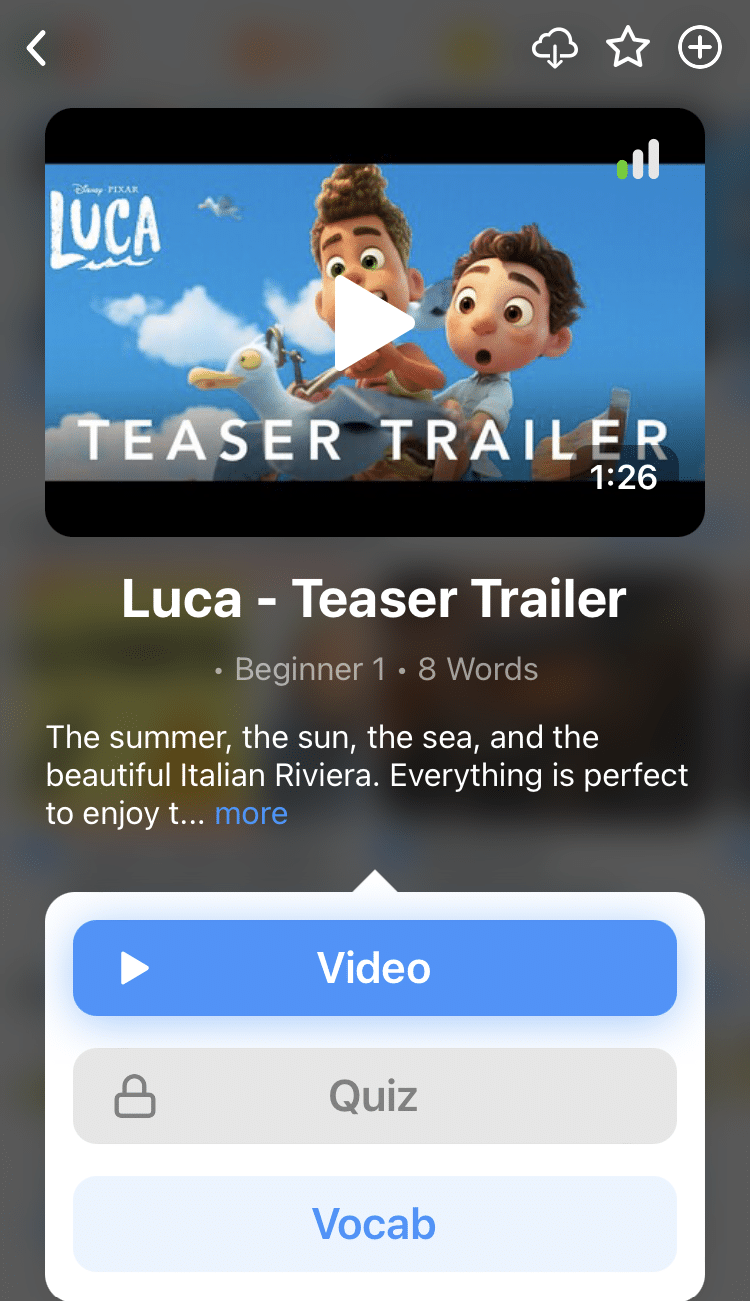
13 Italian Writing Practice Ideas
I have a simple but effective rule for you to remember: To write, you have to write.
Seems like common sense, I know, but writing is a skill that gets better the more you do it.
In other words, practice is vital. But don’t worry—Italian writing practice doesn’t have to be tedious.
Read on to find 13 fun ideas to add to your language program that’ll send your writing skills soaring!
Contents
- 1. Send Texts: Say TTFN to Procrastination
- 2. X: Keep It Short and Sweet
- 3. Facebook: Log On
- 4. Make Lists: Do Your Shopping in Italian
- 5. Copy: Imitate to Learn
- 6. Songs: Listen and Write Down the Lyrics
- 7. Worksheets: Get Nostalgic for School
- 8. Journal: Tell All to Your Dear Diary
- 9. Bullet Journal: Aim for Fluency
- 10. Write Letters: Send Some Snail Mail
- 11. Read: Learn by Example
- 12. Blog: Find Your Audience
- 13. Write: Get Creative
- And One More Thing...
Download: This blog post is available as a convenient and portable PDF that you can take anywhere. Click here to get a copy. (Download)
1. Send Texts: Say TTFN to Procrastination
The simple text message is a form of writing. This basic form of communication is usually condensed into the fundamental vocabulary that you actually use to communicate.
Core vocabulary is the foundation of reading, writing and speaking!
Whether we like to admit it or not, most of us are pretty proficient texters.
Why not put your texting prowess to extra good use by adding texts in Italian to your daily routine? And while you’re at it, turn your entire phone into a learning machine by changing the language to Italian.
To change your iPhone language follow these simple steps:
Open Settings → Tap General → Select Language & Region → Tap Add Language → Select Language → Confirm
It’s just as simple for Android users:
Open Settings → Tap Languages and Input → Add Language → Activate Language by dragging it to the top of the list of languages (it should now be #1)
Now that your phone is ready, find a buddy or a language exchange partner and start texting in Italian! You’ll be surprised at how proficient you can become at some basic writing skills just by texting.
2. X: Keep It Short and Sweet

Even so, the average tweet is short and sweet—kind of like eating a sumptuous bombolone (donut) for breakfast.
But while eating too many high-calorie breakfasts will impact your waistline, practicing Italian writing while tweeting can never be too much of a good thing.
X is fantastic for writing practice because it forces expression in succinct phrases. That is, we get straight to the point with X. It’s a forum for writing clearly and concisely, and that’s worth practicing in any language!
Need a couple of relevant Italian X accounts to follow? Try ACMilan and become one of the 8.5 million followers who keep track of the Milan football team! If you’re into Formula 1, consider following Scuderia Ferrari.
You can also find your own X accounts to follow by searching for some Italian hashtags.
3. Facebook: Log On

How? By posting in Italian!
And if you’re not comfortable writing your status updates in Italian, how about commenting in Italian?
Still not quite sure about it? Then why not check out a few Italian Facebook pages and see how much fun—and entirely un-threatening—this can be!
Fatto in casa da Benedetta (Homemade by Benedetta) is a cooking page that always has mouth-watering photographs and incredible recipes. Laura Pausini, the famous Italian singer, keeps a dynamic page with updates about upcoming concerts or new releases.
So log on and start learning!
4. Make Lists: Do Your Shopping in Italian
Writing practice comes in many forms—including lists!
Unless you draw your lists instead of writing them, all the lists we keep count toward writing practice.
But that’s only if you make your lists in Italian!
Your weekly grocery list, daily to-do list and even holiday shopping list are all examples of writing practice.
Lists help with vocabulary acquisition as well as keeping core vocabulary right on the tip of your tongue—figuratively speaking, of course!
5. Copy: Imitate to Learn
One great way to boost your confidence quickly is by copying from others.
That’s right—this is one instance where being a copycat is encouraged! Of course, this is for personal purposes and not as an act of plagiarism. So don’t publish what you copy—keep it to yourself.
What should you copy? Almost anything—Italian quotes, great lines from magazines, newspaper excerpts and easy short stories are all first-rate choices.
The act of copying builds confidence and also gives you “a feel” for writing. Copying passages and sentences builds vocabulary, shows grammar rules at work and is an excellent way to actually see how Italian words are ordered.
Once you’ve gained some confidence, branch out. Look for and then copy down some quotes that are really meaningful to you. They can be about anything—life, love, friendship. The possibilities are endless.
Another way to learn from your copying is by sentence mining. Dissect everything you write into its components to learn how expertly-written sentences are put together, then use this knowledge to write your own sentences following the same formula.
6. Songs: Listen and Write Down the Lyrics
As well as copying quotes, you could also try writing down song lyrics. Italian songs are great as they are not only fun to listen to, but they can also be used by Italian learners of all levels!
For example, beginner learners could search for the lyrics online and copy them while listening to the song, taking note of sentence structure and any specific vocabulary.
For more advanced Italian learners, a great way to get both writing and listening practice is by listening to the song and attempting to write down the lyrics. Once you’ve finished, you can search for the official song lyrics and compare them to what you’ve written.
7. Worksheets: Get Nostalgic for School
Worksheets are language-learners’ friends. They’re especially great for beginners to the language but they’re also useful for more advanced students who want to refresh their skills.
Some worksheets are downloadable and printable while others are meant to be worked online.
For example, on Teachers Pay Teachers, you can find Italian worksheets covering a range of vocabulary and grammar topics. While some of the resources are sold for a fee, there are also plenty of free worksheets available to download.
ToLearnFree has a variety of Italian worksheets to be completed online. They offer the advantage of an instant check feature so you’ll know right away whether your writing makes the grade. It’s good to see what points need improving and this resource provides that instantly.
Click here to discover more helpful resources that you can use to find Italian worksheets.
8. Journal: Tell All to Your Dear Diary
Working on an Italian journal is a super way to get daily writing practice in. While you’re chronicling your life or keeping memories safe for a later date, your writing ability will be drastically improving.
Thinking in Italian, giving your thoughts form, considering Italian word order and then getting all of that from your head to the page is an epic adventure.
This isn’t a task for a beginner but you don’t need to wait until you’re fluent in Italian to do this, either.
Remember, a journal is for you—write like no one’s ever going to read it!
If you find yourself struggling to come up with topics for your journal, make a journal prompt jar and fill it with ideas. Then, when you’re facing writer’s block, just reach in and pull out a random prompt to write about!
9. Bullet Journal: Aim for Fluency
If you’re feeling a bit more confident, step up the journaling game and keep your life organized with an Italian bullet journal.
A bullet journal is a journal that keeps track of appointments, goals, fitness and dietary routines and any activities on your calendar.
If you commit to keeping a bullet journal in Italian you’re not only prioritizing your life but you’re also working on your language learning!
All the extra writing practice will feel like part of your routine—and that’s exactly how your Italian skills should feel: natural, routine and just part of your everyday life!
10. Write Letters: Send Some Snail Mail
Letter writing provides tons of writing practice. And the great part of the whole endeavor is that it offers unlimited potential for language learners at every skill level.
If you’re a beginner, keep the sentences and thoughts brief and simple. More proficient? Add thought-provoking concepts and complicated sentence construction to your missives.
Finding an Italian pen pal is a snap. Check out PenPal World or Global Pen Friends to find someone who shares your interests. Then write on—and make a new friend!
11. Read: Learn by Example
Reading provides an excellent opportunity for writing practice by giving you content and a theme.
Remember the old-school book reports many of us wrote when we were in school? We read, then wrote about what we read. That’s still a useful practice.
There are amazing Italian books to choose from, and translation apps can help provide explanations for words or phrases you’re unsure of.
Take notes. Write a review. Form an online book club with other Italian language learners, then read and discuss books in Italian.
You could also try reading subtitles on any TV show or movie you watch. For instance, on FluentU you can read the transcript of any of its Italian videos, then read along with the subtitles.
FluentU takes authentic videos—like music videos, movie trailers, news and inspiring talks—and turns them into personalized language learning lessons.
You can try FluentU for free for 2 weeks. Check out the website or download the iOS app or Android app.
P.S. Click here to take advantage of our current sale! (Expires at the end of this month.)
12. Blog: Find Your Audience
Blogging is like writing a journal with an audience. It’s a great way to improve your writing skills, get some feedback on your Italian and even start a conversation.
Blogs allow you to share your hobbies, ideas or travel experiences with others.
You could start a page to discuss Italian restaurants or share information about interesting podcasts. Or you might want to document your Italian learning program. The choices are endless!
For extra practice, you could also provide an English translation of what you’re writing in Italian.
The only limit to a blogging journey is the writer’s imagination. So put on your thinking cap and start writing!
13. Write: Get Creative
Are you feeling especially brave?
Think you’d like to see your name on a cover someday?
If that’s the case, open a file or a notebook and write your own story, play, novel or article in Italian! Jump right in—right away and write away!
Searching for story ideas? Try the daily writing prompts at “Story A Day” and you’ll never be at a loss for words!
There’s no fast track to achieving proficiency in certain skills.
Want to ride a bicycle? Practice.
Want to paint? Practice.
Want to write? Practice!
Practice is the key to all of these—and many more—life skills. But practice doesn’t need to be a hassle. It can be entertaining, too.
Incorporate a few of our fun Italian writing practice exercises into your daily language routine and you’ll hardly feel like you’re studying Italian!
Buona fortuna! (Good luck!)
Download: This blog post is available as a convenient and portable PDF that you can take anywhere. Click here to get a copy. (Download)
And One More Thing...
If you're as busy as most of us, you don't always have time for lengthy language lessons. The solution? FluentU!
Learn Italian with funny commericals, documentary excerpts and web series, as you can see here:

FluentU helps you get comfortable with everyday Italian by combining all the benefits of complete immersion and native-level conversations with interactive subtitles. Tap on any word to instantly see an image, in-context definition, example sentences and other videos in which the word is used.

Access a complete interactive transcript of every video under the Dialogue tab, and review words and phrases with convenient audio clips under Vocab.

Once you've watched a video, you can use FluentU's quizzes to actively practice all the vocabulary in that video. Swipe left or right to see more examples of the word you’re on.

FluentU will even keep track of all the Italian words you’re learning, and give you extra practice with difficult words. Plus, it'll tell you exactly when it's time for review. Now that's a 100% personalized experience!
The best part? You can try FluentU for free with a trial.
Start using the FluentU website on your computer or tablet or, better yet, download the FluentU app from the iTunes or Google Play store. Click here to take advantage of our current sale! (Expires at the end of this month.)




